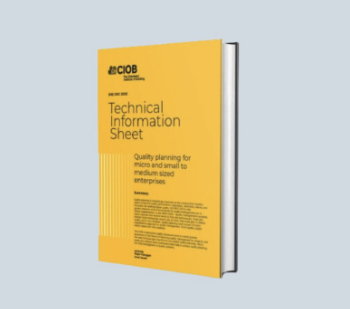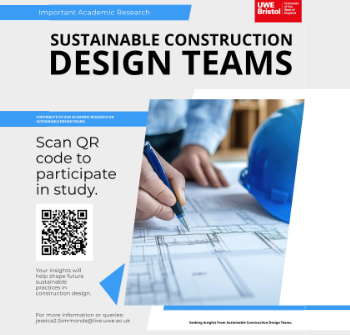Appointing an architect
Contents |
[edit] Introduction
The process of designing and constructing a building is often an expensive and time-consuming undertaking. Most projects will benefit from hiring an architect and/or other professionals at any early stage.
Architects are able to apply their impartiality and creativity when thinking about how to plan a new building, or adapt or expand an existing one. They can help to support the client’s strategic decision-making, carry out feasibility studies, and help develop a project brief.
Very broadly, the roles performed by an architect might include:
- Helping the client prepare a strategic brief.
- Carrying out feasibility studies and options appraisals.
- Advising on the need to appoint other professionals to the consultant team, or independent client advisers, specialist designers, specialist contractors and so on.
- Advising on the procurement route.
- Contributing to the preparation of a project brief.
- Preparing the concept design.
- Preparing the detailed design.
- Preparing planning applications.
- Preparing applications for building regulations approval and other statutory approvals.
- Preparing production information.
- Preparing tender documentation.
- Contributing to the assessment of tenders.
- Reviewing designs prepared by others.
- Acting as contract administrator.
- Inspecting the works.
- Advising on the rectification of defects.
- Providing post occupancy 'soft landings' services.
Some services will only be undertaken by an architect if they are specifically identified in their appointment documents, and otherwise may not be included within the fee. These are described as 'other services' on some forms of appointment.
[edit] Finding an architect
Architects may be selected by a process of:
- Recommendation, for example, one consultant may recommend others, which can save time for the client and make it easier to establish collaborative working practices (it is important to set out requirements for collaborative practices during the appointment procedure to ensure that the consultant team works effectively together throughout the project).
- Research and interview.
- Open competition (with or without design).
- Selective competition (with or without design).
- Online platforms with vetted architects.
- An existing relationship or framework agreement.
Many of the professional bodies that represent architects have registers of architects that can be searched, and some will help clients find suitable architects.
[edit] ARB
The term ‘architect’ is protected by the Architects Act 1997. Only qualified individuals that are registered with the ARB can offer their services as architects. However, the same services can be provided by people that are not architects as long as they do not claim to be architects.
The Architects Registration Board code of conduct requires that there is a written agreement before undertaking work which adequately covers:
- The contracting parties.
- The scope of the work.
- The fee or method of calculating it.
- Who will be responsible for what.
- Any constraints or limitations on the responsibilities of the parties.
- The provisions for suspension or termination of the agreement, including any legal rights of cancellation.
- Confirmation of adequate and appropriate insurance cover.
- The existence of any Alternative Dispute Resolution schemes that the contract is subject to and how they might be accessed.
- Details of the architect’s complaints-handling procedure.
- Confirmation that the architect is registered with the Architects Registration Board and that they are subject to the code.
[edit] Architect's obligations
The architect has a duty of care:
- To exercise reasonable skill, care and diligence in accordance with the normal standards of the architects profession in performing the services and discharging the architects obligations.
- Provide adequate professional, financial and technical resources.
- A duty of care in tort.
A duty to inform:
- The client about progress and any issues that may affect the brief, construction cost, programme or quality.
- The client of the need to appoint others to perform work in connection with the project.
Collaboration:
- To collaborate with others named in project data or who's appointment is foreseeable and to integrate information into thier work.
Authority:
- To act on behalf of client in matters set out in agreement.
- To seek client approval to amend the design, terminate others employment or enter the client into contract with others.
[edit] Standard forms of appointment
There are a range of standard forms of appointment available:
- RIBA Standard Agreement 2010 (S- 10- A) – Architect.
- RIBA Concise Agreement (C- 10- A) – Architect.
- RIBA Domestic Project Agreement (D- 10- A) – Architect (when using intermediate or minor building contracts on domestic projects).
- RIBA Sub- Consultant Agreement (SC- 10) – where one consultant appoints another to perform part of their services.
- RIBA Letter contract (domestic or commercial version) – for small works.
- ACA SFA 2012: ACA Standard Form of Agreement for the Appointment of an Architect.
- The CIC Consultant's Contract.
If a bespoke agreement is used:
- This is a matter of professional principle, commercial judgment and negotiation.
- Legal advice should be sought and the architect's insurers consulted.
- It is important to check there is only a 'duty of care' provision and not 'fitness for purpose'.
- It is important to check clauses relating to warranties, payment provisions, copyright, termination and disputes.
- The Housing Grants, Construction and Regeneration Act 1996 (Construction Act) will still apply as long as the client is not consumer client.
- It should cover the same terms as the RIBA appointment to satisfy the RIBA code of conduct.
[edit] Fees
For more information, see Architects fees.
See also: Hiring an architect as a domestic client.
[edit] Related articles on Designing Buildings
- Appointing consultants.
- Architect.
- Architects fees.
- Architectural design.
- Collaborative practices.
- Collateral warranties
- Consultant team.
- Consultant's proposals.
- Design liability.
- Designers.
- Employer's information requirements.
- Fees.
- Fee proposals.
- Framework agreements.
- Hiring an architect as a commercial client.
- Hiring an architect as a domestic client.
- Integrated Supply Team.
- Letter of appointment.
- Pre-qualification questionnaire.
- Procurement route.
- Professional Indemnity Insurance clause in conditions of engagement.
- Professional indemnity insurance.
- Project architect.
- Proprietary information.
- Request for proposals.
- Schedule of services.
- The role of architects.
Featured articles and news
About the 5 Percent Club and its members
The 5% Club; a dynamic movement of employers committed to building and developing the workforce.
New Homes in New Ways at the Building Centre
Accelerating the supply of new homes with MMC.
Quality Planning for Micro and Small to Medium Sized Enterprises
A CIOB Academy Technical Information sheet.
A briefing on fall protection systems for designers
A legal requirement and an ethical must.
CIOB Ireland launches manifesto for 2024 General Election
A vision for a sustainable, high-quality built environment that benefits all members of society.
Local leaders gain new powers to support local high streets
High Street Rental Auctions to be introduced from December.
Infrastructure sector posts second gain for October
With a boost for housebuilder and commercial developer contract awards.
Sustainable construction design teams survey
Shaping the Future of Sustainable Design: Your Voice Matters.
COP29; impacts of construction and updates
Amid criticism, open letters and calls for reform.
The properties of conservation rooflights
Things to consider when choosing the right product.
Adapting to meet changing needs.
London Build: A festival of construction
Co-located with the London Build Fire & Security Expo.
Tasked with locating groups of 10,000 homes with opportunity.
Delivering radical reform in the UK energy market
What are the benefits, barriers and underlying principles.
Information Management Initiative IMI
Building sector-transforming capabilities in emerging technologies.
Recent study of UK households reveals chilling home truths
Poor insulation, EPC knowledge and lack of understanding as to what retrofit might offer.























